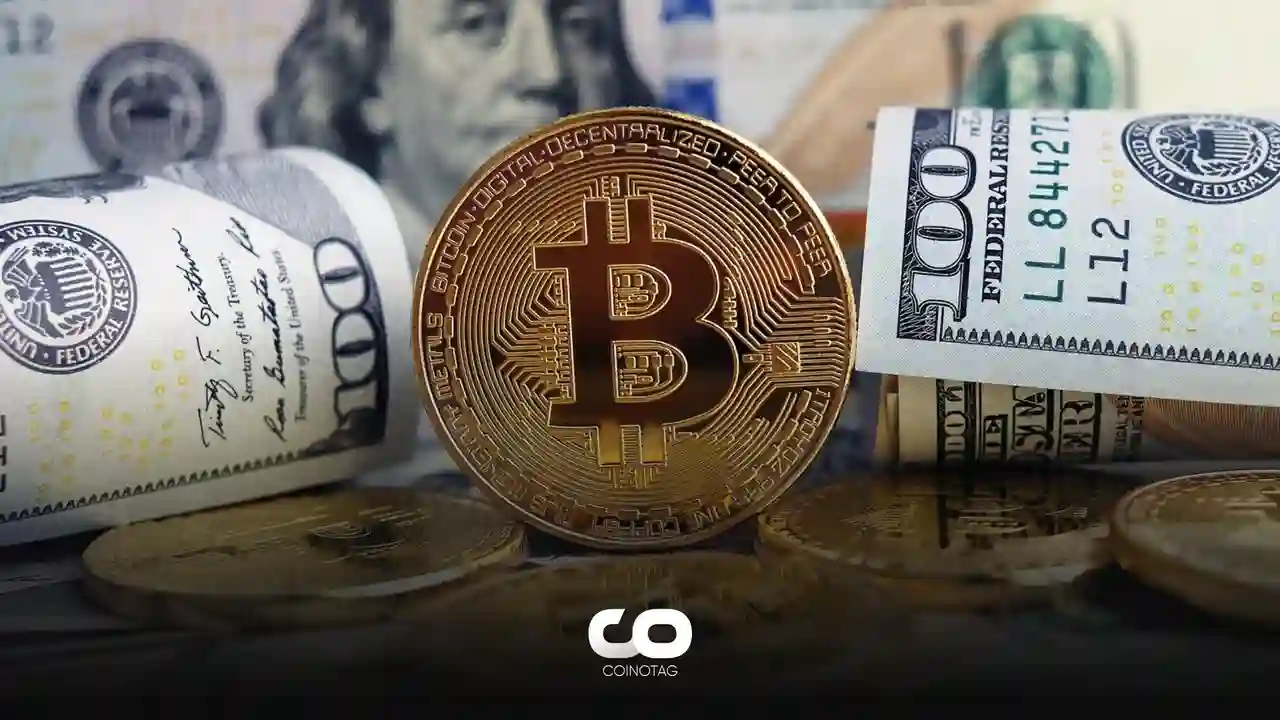| COINOTAG recommends • Exchange signup |
| 💹 Trade with pro tools |
| Fast execution, robust charts, clean risk controls. |
| 👉 Open account → |
| COINOTAG recommends • Exchange signup |
| 🚀 Smooth orders, clear control |
| Advanced order types and market depth in one view. |
| 👉 Create account → |
| COINOTAG recommends • Exchange signup |
| 📈 Clarity in volatile markets |
| Plan entries & exits, manage positions with discipline. |
| 👉 Sign up → |
| COINOTAG recommends • Exchange signup |
| ⚡ Speed, depth, reliability |
| Execute confidently when timing matters. |
| 👉 Open account → |
| COINOTAG recommends • Exchange signup |
| 🧭 A focused workflow for traders |
| Alerts, watchlists, and a repeatable process. |
| 👉 Get started → |
| COINOTAG recommends • Exchange signup |
| ✅ Data‑driven decisions |
| Focus on process—not noise. |
| 👉 Sign up → |
- After a relatively stable week in the cryptocurrency market last week, Bitcoin failed to stay above $27,200 at the beginning of this week.
- Amidst market stability and an increasing adoption environment, an interesting trend has emerged in the world of Bitcoin – the commitment of long-term holders to keep their funds.
- On the other hand, short-term holders (STHs), defined as Bitcoin investors holding assets for less than 155 days, are experiencing a notable shift.
Long-term investors in Bitcoin are increasing their power by owning 13.44 million Bitcoins: How are short-term investors doing?
Long-Term Holders Strengthen Their Position in Bitcoin

After a relatively stable week in the cryptocurrency market last week, Bitcoin failed to stay above $27,200 at the beginning of this week. Factors contributing to this stability include the Federal Reserve’s policy meeting, where no decisions regarding new interest rate hikes were made.
Additionally, signs of global cryptocurrency adoption continue to emerge, highlighted by the Japanese banking giant Nomura launching a Bitcoin fund earlier this week, underscoring the ongoing growth in the sector.
| COINOTAG recommends • Professional traders group |
| 💎 Join a professional trading community |
| Work with senior traders, research‑backed setups, and risk‑first frameworks. |
| 👉 Join the group → |
| COINOTAG recommends • Professional traders group |
| 📊 Transparent performance, real process |
| Spot strategies with documented months of triple‑digit runs during strong trends; futures plans use defined R:R and sizing. |
| 👉 Get access → |
| COINOTAG recommends • Professional traders group |
| 🧭 Research → Plan → Execute |
| Daily levels, watchlists, and post‑trade reviews to build consistency. |
| 👉 Join now → |
| COINOTAG recommends • Professional traders group |
| 🛡️ Risk comes first |
| Sizing methods, invalidation rules, and R‑multiples baked into every plan. |
| 👉 Start today → |
| COINOTAG recommends • Professional traders group |
| 🧠 Learn the “why” behind each trade |
| Live breakdowns, playbooks, and framework‑first education. |
| 👉 Join the group → |
| COINOTAG recommends • Professional traders group |
| 🚀 Insider • APEX • INNER CIRCLE |
| Choose the depth you need—tools, coaching, and member rooms. |
| 👉 Explore tiers → |
Amidst market stability and an increasing adoption environment, an interesting trend has emerged in the world of Bitcoin – the commitment of long-term holders to keep their funds. Long-term holders (LTHs), often referred to as ‘Hodlers,’ are individuals who have held their Bitcoin positions for more than 155 days.
According to data from crypto analytics firm IntoTheBlock, these individuals have displayed a consistent commitment to the cryptocurrency. Specifically, this group currently holds an impressive 13.44 million Bitcoins, constituting a surprising 69% of the total circulating supply, which is currently 19.49 million BTC. The firm stated:
| COINOTAG recommends • Exchange signup |
| 📈 Clear interface, precise orders |
| Sharp entries & exits with actionable alerts. |
| 👉 Create free account → |
| COINOTAG recommends • Exchange signup |
| 🧠 Smarter tools. Better decisions. |
| Depth analytics and risk features in one view. |
| 👉 Sign up → |
| COINOTAG recommends • Exchange signup |
| 🎯 Take control of entries & exits |
| Set alerts, define stops, execute consistently. |
| 👉 Open account → |
| COINOTAG recommends • Exchange signup |
| 🛠️ From idea to execution |
| Turn setups into plans with practical order types. |
| 👉 Join now → |
| COINOTAG recommends • Exchange signup |
| 📋 Trade your plan |
| Watchlists and routing that support focus. |
| 👉 Get started → |
| COINOTAG recommends • Exchange signup |
| 📊 Precision without the noise |
| Data‑first workflows for active traders. |
| 👉 Sign up → |
“They historically hold through bear markets and take profits in bull runs.”
Challenges for Short-Term Holders
On the other hand, short-term holders (STHs), defined as Bitcoin investors holding assets for less than 155 days, are undergoing a significant change. According to the latest ‘Week Onchain Newsletter’ from blockchain analytics firm Glassnode, STHs currently own a smaller portion of the available Bitcoin supply, a situation not seen in over a decade.
Glassnode’s data showed that 97.5% of short-term holders are currently facing unrealized losses, indicating a significant reduction in their influence. Interestingly, on-chain data also suggests that Bitcoin Hodlers are acquiring more Bitcoin than short-term holders.
| COINOTAG recommends • Traders club |
| ⚡ Futures with discipline |
| Defined R:R, pre‑set invalidation, execution checklists. |
| 👉 Join the club → |
| COINOTAG recommends • Traders club |
| 🎯 Spot strategies that compound |
| Momentum & accumulation frameworks managed with clear risk. |
| 👉 Get access → |
| COINOTAG recommends • Traders club |
| 🏛️ APEX tier for serious traders |
| Deep dives, analyst Q&A, and accountability sprints. |
| 👉 Explore APEX → |
| COINOTAG recommends • Traders club |
| 📈 Real‑time market structure |
| Key levels, liquidity zones, and actionable context. |
| 👉 Join now → |
| COINOTAG recommends • Traders club |
| 🔔 Smart alerts, not noise |
| Context‑rich notifications tied to plans and risk—never hype. |
| 👉 Get access → |
| COINOTAG recommends • Traders club |
| 🤝 Peer review & coaching |
| Hands‑on feedback that sharpens execution and risk control. |
| 👉 Join the club → |
In particular, with nearly all Short-Term Holders facing unrealized losses, sentiment has experienced a noticeable decline, increasing the likelihood of bulls gaining an upper hand. Conversely, when over 97.5% of short-term holder positions are in the green, these participants typically find themselves either at breakeven or with profitable positions to exit.
Therefore, these changes in Bitcoin ownership dynamics could play a key role in shaping the cryptocurrency’s price trend, independent of short-term market fluctuations.
| COINOTAG recommends • Members‑only research |
| 📌 Curated setups, clearly explained |
| Entry, invalidation, targets, and R:R defined before execution. |
| 👉 Get access → |
| COINOTAG recommends • Members‑only research |
| 🧠 Data‑led decision making |
| Technical + flow + context synthesized into actionable plans. |
| 👉 Join now → |
| COINOTAG recommends • Members‑only research |
| 🧱 Consistency over hype |
| Repeatable rules, realistic expectations, and a calmer mindset. |
| 👉 Get access → |
| COINOTAG recommends • Members‑only research |
| 🕒 Patience is an edge |
| Wait for confirmation and manage risk with checklists. |
| 👉 Join now → |
| COINOTAG recommends • Members‑only research |
| 💼 Professional mentorship |
| Guidance from seasoned traders and structured feedback loops. |
| 👉 Get access → |
| COINOTAG recommends • Members‑only research |
| 🧮 Track • Review • Improve |
| Documented PnL tracking and post‑mortems to accelerate learning. |
| 👉 Join now → |








